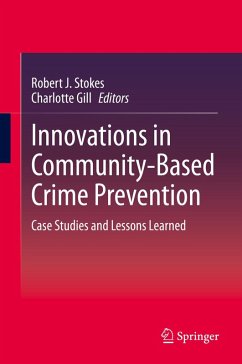This book serves to document the process, challenges, and lessons learned from the design and implementation of this innovative program. It covers researcher-practitioner partnerships, crime prevention planning processes, programming implementation, and issues related to sustainability of community-policing initiatives that transcend institutional barriers and leadership turnover. Through researcher partnerships at each site, it provides a rich dataset for understanding and comparing the social and economic problems that contribute to criminality, as well as the conditions where prosocial behavior and collective efficacy thrive. It also examines the future of this federally-funded program going forward in a new Presidential administration.
This work will be of interest to researchers in criminology and criminal justice, particularly with an interest in translational/applied criminology and crime prevention, as well as related fields such as public policy, urban planning, and sociology.
Dieser Download kann aus rechtlichen Gründen nur mit Rechnungsadresse in A, B, BG, CY, CZ, D, DK, EW, E, FIN, F, GR, HR, H, IRL, I, LT, L, LR, M, NL, PL, P, R, S, SLO, SK ausgeliefert werden.









